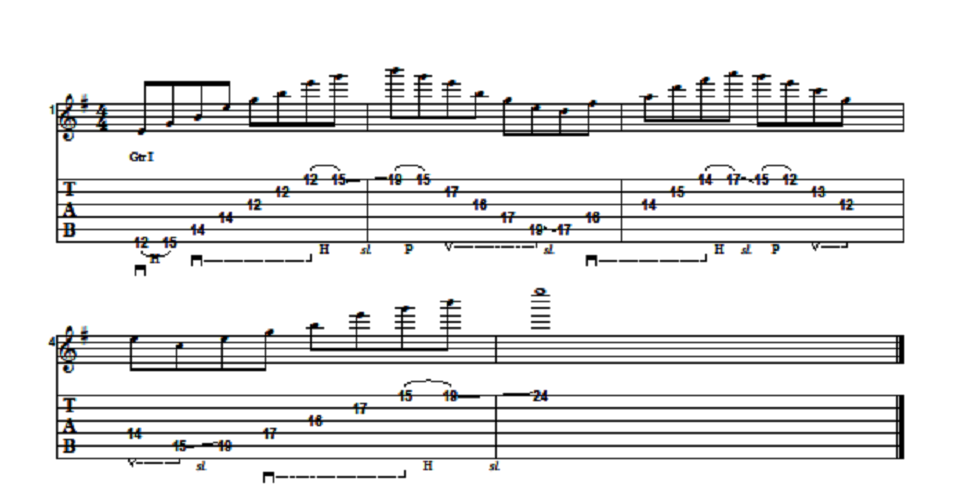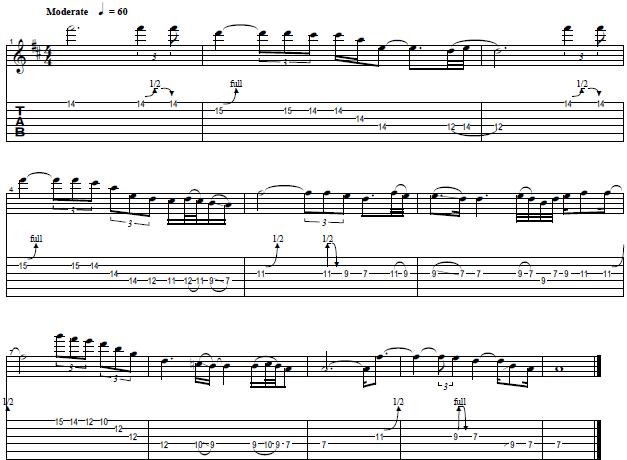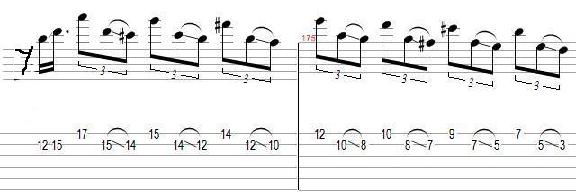Derryl teaches us the “3-1-3” concept.
I HIGHLY recommend Derryls DVDs…
CLICK HERE TO CHECK THEM OUT !!!
Derryl: First of all, I just want to say hey
to everybody out there in guitar land. The 3-1-3
concept, how that came about was I first seen
that in the Frank and Bali [phonetic] video.
He was showing this pentatonic idea to where
he was doing — like if we took like an A-minor
pentatonic, he’d play like two notes on the low E,
one on the A, three on the D, one on the G, three
on the B and two on the high E. But he was playing
it something like… Something like that.
I thought, well, that was pretty cool, but I kind
of changed it around to where you would play three,
one, three, one, three and then I put another three
on the high E. And then later, a friend of mine,
Derrick Taylor [phonetic], suggested that I put the
two consecutive threes, as it where, on the D and
the G strings. So then it became three on the A,
three on the low E, one on the A, three on the D,
three on the G, one on the B and three on the high E.
So you have… Yeah, I just took it from there and
figured out all the inversions and just tried to
implement it into my playing and stuff.
The advantages of playing a pentatonic scale this
way is, to me it seems like you can get more speed
and you also get more range. If you were to play a
pentatonic in the traditional fashion where you’ve
got two notes per string, you’re going to get that
much range, maybe here if you slid up. But with the
3-1-3 you can reach up to there. And then if you add
some tapping to it… So, I mean, you can get a lot
of range out of it.
And then, as far as the speed, it was just easier for
me to get more speed playing it that way than two notes
per string and especially when you’re talking about picking.
I’m not very good picking just two notes per string and
getting a lot of speed. I mean, I really haven’t worked
all that hard on it, but if I were to play an A-minor
pentatonic two notes per string, that’s about how fast I
could play it. But with the 3-1-3, because of the fact that
there’s an odd number of notes you can use what’s called
economy picking.
Therefore, with economy picking, you’re not having to
jump over any string and pick up, or jump over and pick
down or what have you. It would be down, up, down, then
you go to the next string with a downstroke and then the
next string with a downstroke. Down, up, down, then you
go to the next string, the G string, with a downstroke,
up, down, and the B string with a downstroke and then
the high E with a downstroke, up, down.
So you have down, up, down, down, down, up, down, down,
up, down, down, down, up, down. I mean, there’s no way
I could play a pentatonic scale two notes per string
with that much range and that fast. I’m sure there are
players out there that can do that, but this, to me,
was an easier solution. So there you have it.
Claude: So that’s pretty cool. Do you use that primarily
as like a way to do a fast run or do you also mix that
in like just in the middle of the scale, playing licks?
Derryl: Yeah. Because of having worked-out like all the
inversions of the scale and I really like to do a lot of
improvising and stuff, yeah, I’ve just grown accustomed
to using that framework to not only play fast, but
melodically, too.
Now, I don’t play the pentatonic that way exclusively.
I mean, sometimes I will find it appropriate to play the
two-note-per-string type of stuff, or if I’m doing more
of a slow blues-y type of… That type of stuff. And
then I might want to do some sequencing to where I’ve
got three notes on every string and do something like
a… Stuff like that.
In my DVD, for instance, “Cool Legato Phrases”, I show
all kinds of interesting ways to play pentatonics that
you might not have seen before. You can use them in
just about any style.



